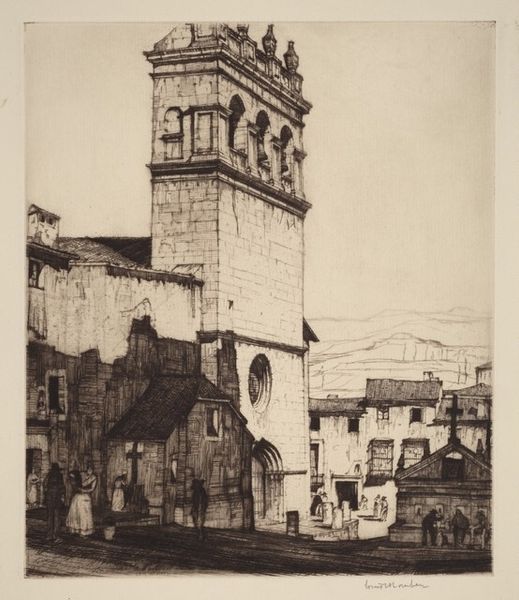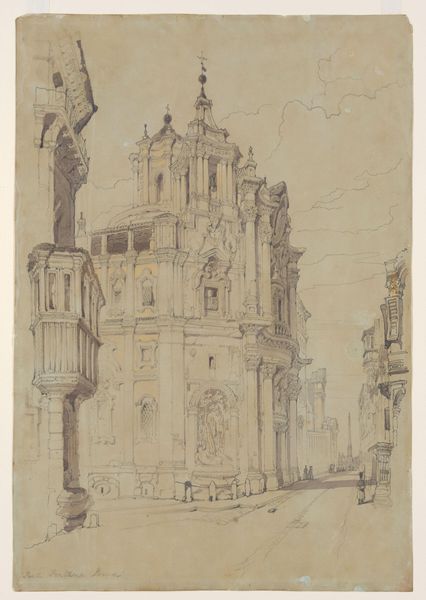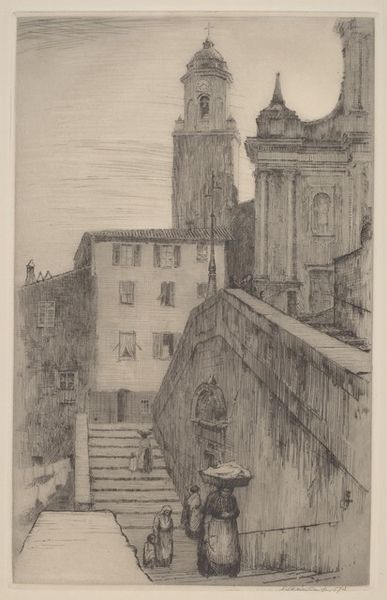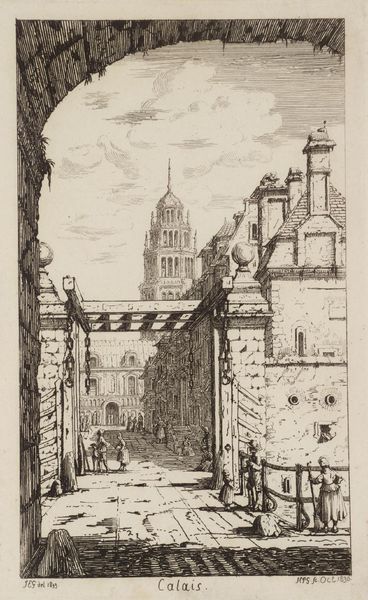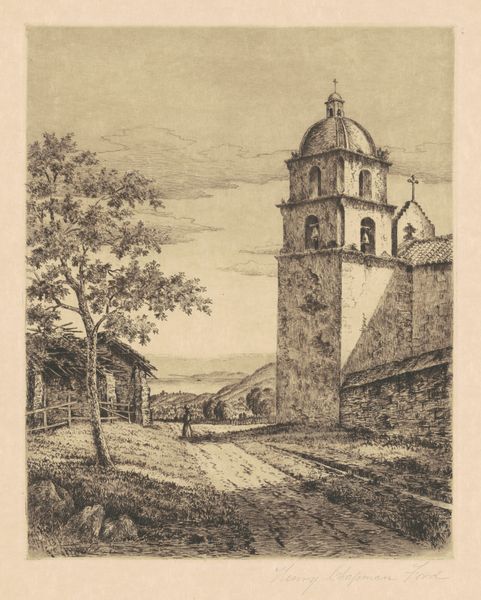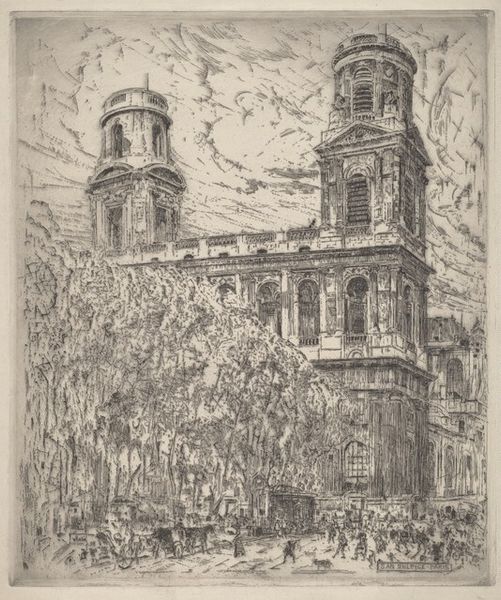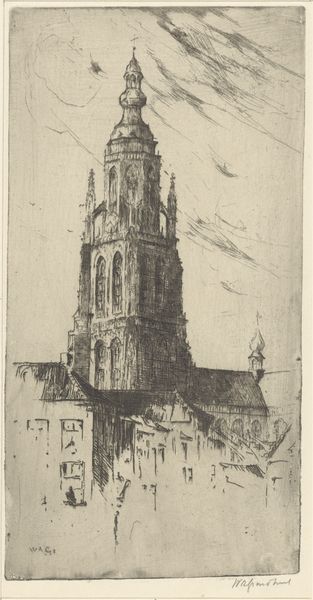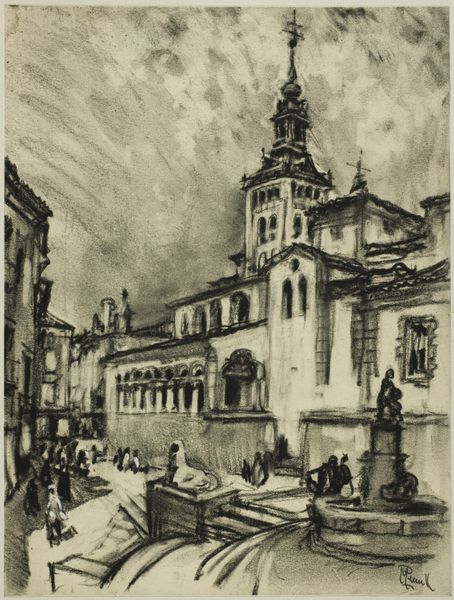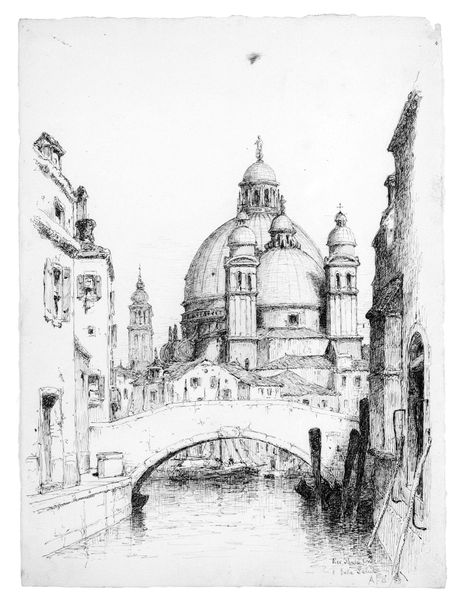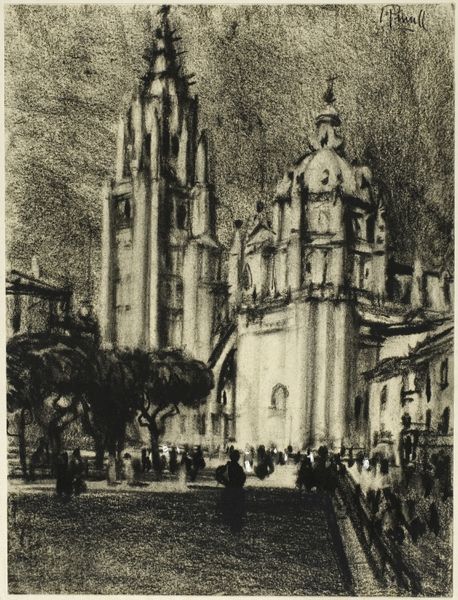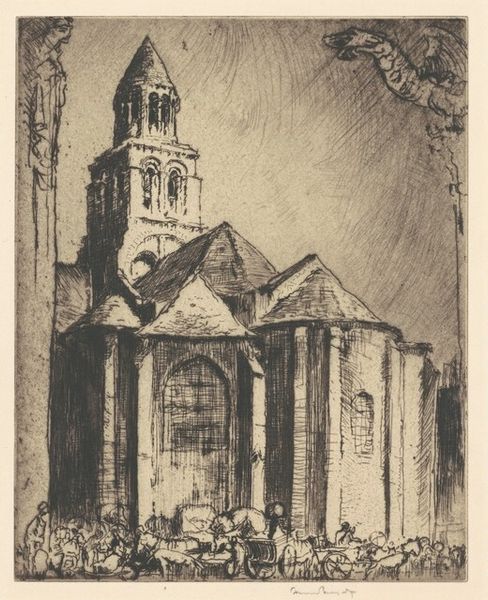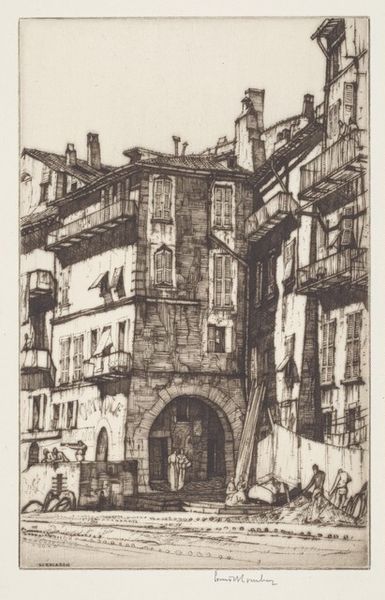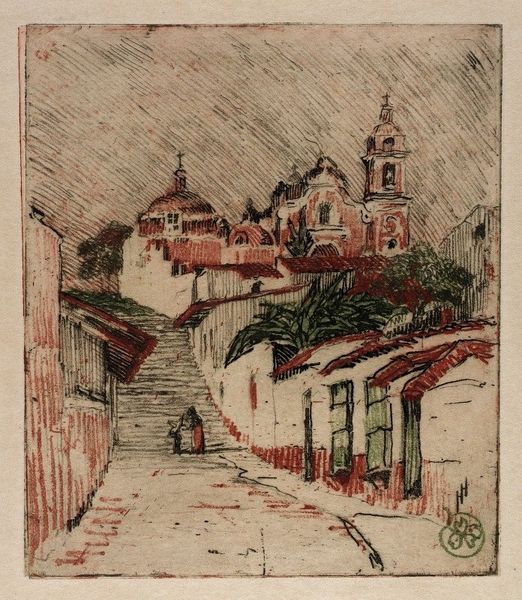
print, etching
# print
#
etching
#
landscape
#
mexican-muralism
#
cityscape
#
realism
Dimensions: plate: 32.7 × 22.54 cm (12 7/8 × 8 7/8 in.) sheet: 45.4 × 30.8 cm (17 7/8 × 12 1/8 in.)
Copyright: National Gallery of Art: CC0 1.0
Curator: What a fascinating print! This is "Cathedral—Taxco—Mexico," an etching by Frank P. Whiting, dating back to the 1940s. Editor: The density of line work really grabs you. It’s this incredible texture, especially in the tiled roofs and the cathedral itself. Gives the whole scene a hushed, almost timeless quality. Curator: Exactly. Whiting was deeply interested in capturing the urban landscape of Mexico, a period heavily influenced by Mexican Muralism's focus on national identity and its visual storytelling. We see how the church is positioned as the center of social and political life. Editor: And look at how Whiting’s process impacts the imagery. Etching lends itself to this meticulous detail. The layers of acid biting into the metal plate translate into varying depths of blacks and grays. You can almost feel the cool stone. The man sitting on the stoop--is he observing, or is he weary? Curator: Perhaps both! This work appeared during a time when the United States and Mexico were strengthening cultural ties, even as debates around American exceptionalism flourished. Whiting’s work, in this light, may suggest a desire to depict a harmonious relationship through imagery. The very act of choosing this scene—the grandeur of the colonial church juxtaposed against daily life—implies a deliberate social narrative. Editor: I’m intrigued by the almost brutal contrast of architectural elements. You've got the heavy cathedral made of what is likely quarried stone looming in the distance against these sun-baked, presumably handmade clay tiles. It brings up questions about labor and craftsmanship. It's clear some hands were more visible than others in shaping the urban landscape. Curator: It’s precisely that visual conversation—the power dynamics made visible—that Whiting seems to be interested in exploring. Or at least, inviting us to consider, particularly with the rise of tourist art in Mexico. Editor: Tourism transforms places; makes the daily existence of one culture a visual commodity for another. I’m still caught on that interplay of crafted, constructed, imposed, all merging in a single frame, captured by the lines on a plate. Curator: An excellent way to see how art becomes an echo chamber reflecting a given time. Editor: Yes. Materials telling tales of makers, places, and politics all at once.
Comments
No comments
Be the first to comment and join the conversation on the ultimate creative platform.
